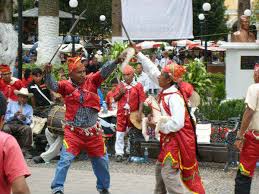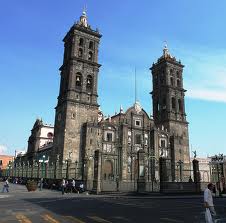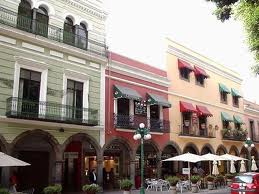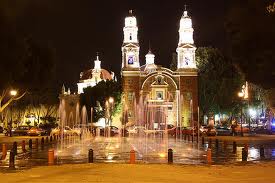
Puebla is a very traditional state and as such, it is full of history and culture. As most places with these characteristics, Puebla, especially the Colonial capital city is brimming with many legends part of its natural folklore, beliefs and the inherited Mexican wit.
 The China Poblana is one of them, referring in its broadest sense and common today, to the name of what is considered the traditional dress of women in the State of Puebla in Mexico, and is said to have received its name due to a slave belonging to a lineage of an Indian nobleman whose name was Mirra, and was said to wear these clothes during the time of the presidency of Porfirio Diaz.
The China Poblana is one of them, referring in its broadest sense and common today, to the name of what is considered the traditional dress of women in the State of Puebla in Mexico, and is said to have received its name due to a slave belonging to a lineage of an Indian nobleman whose name was Mirra, and was said to wear these clothes during the time of the presidency of Porfirio Diaz.
After being converted to Catholicism in the Indian city of Cochin, where she was kidnapped by Portuguese pirates, Mirra was given the name of Catarina de San Juan, the name with which was known in the region of Puebla where she served as a slave, and then married and took the habit. At her death, Catarina de San Juan was buried in the sacristy of the Church of the Company of Jesus in Puebla, and is now popularly known as the Tomb of the China Poblana.
 In Puebla de los Angeles this tomb and her were venerated as a saint until in 1691, when the Inquisition banned any popular devotions and considered pagan rituals.
In Puebla de los Angeles this tomb and her were venerated as a saint until in 1691, when the Inquisition banned any popular devotions and considered pagan rituals.
During the nineteenth-century when the China (Chinese woman) became a popular type Mexican and foreign writers raised the question about the origin of the Chinese dress. Vazquez Mantecon attributes the spread of this hypothesis to Carl Nebel, German traveler whose book Scenic and archaeological Travel on the most interesting part of the Mexican Republic (1835) portrait women dressed as chinas while others say the dress came from the Mexico City or even Oaxaca regions.
 It is noted that the Mongol princess was oriental and this was a reason for her to be called by the poblanos a Chinese. Asians in Mexico continued calling every Asian a Chinese, the East was considered par excellence as a native of China. Another hypothesis associates the nickname with the fact that Catarina de San Juan married a slave named Domingo Juarez, which belonged to the caste of the Chinese. After marriage, the China Puebla must have been called by the inhabitants of Puebla as correspondent to the caste of her husband, historically.
It is noted that the Mongol princess was oriental and this was a reason for her to be called by the poblanos a Chinese. Asians in Mexico continued calling every Asian a Chinese, the East was considered par excellence as a native of China. Another hypothesis associates the nickname with the fact that Catarina de San Juan married a slave named Domingo Juarez, which belonged to the caste of the Chinese. After marriage, the China Puebla must have been called by the inhabitants of Puebla as correspondent to the caste of her husband, historically.
According to descriptions of the nineteenth century, the Chinese attire consisted of the following items:
 A white shirt, with frayed and embroidery work in silk and beaded with geometric and floral motives in bright colors.
A white shirt, with frayed and embroidery work in silk and beaded with geometric and floral motives in bright colors.
A skirt called beaver, which took its name from the fabric with which it was made. The beaver was worked with sequins and 9 geometric patterns.
A band that was used to hold the beaver at the waist of the woman who wore it. The band may or may not have been worked with embroidery, or woven with brocade technique.
A shawl or reboso made of silk in most cases. The shawl is a garment common in Mexico, even today by women to cover the cold, but it was used for carrying babies or anything else whose size and weight make it difficult to take in the hands. The ball shawl, which was the most commonly used by the Chinese, was woven with threads of blue and white, and had the cradle of the Otomi village Santa Maria del Rio.
 As footwear, despite their financial shortcomings, a Chinese kept using satin shoes embroidered with silk.
As footwear, despite their financial shortcomings, a Chinese kept using satin shoes embroidered with silk.
Finally, the China complemented the outfit with beads and jewels that adorned their ears, bare chest, and hands.
Most agree in the descriptions of them in the nineteenth century as the china being very beautiful women, whose dresses were too daring for the time, especially due to the lack of a corset.
 The chinas were also considered excellent dancers portrayed of The Atole, The Agualulco, El Palomo and others who are part of the twentieth century folk dances, also as a paragon of cleanliness and order; loyalty by their mate although quite liberal on issues of their sexuality.
The chinas were also considered excellent dancers portrayed of The Atole, The Agualulco, El Palomo and others who are part of the twentieth century folk dances, also as a paragon of cleanliness and order; loyalty by their mate although quite liberal on issues of their sexuality.
Near the House of the China Puebla where Catarina de San Juan died next to the Temple of the Company, a figure of the China decorates the courtyard of the building dedicated to offering typical food of Puebla nowadays, very visited by tourist and popular amongst visitors and locals alike.
Much more can be say about the China Poblana, and we will delve into it, but if you visit Puebla do not forget to ask about her and see her statue and many other commemorative and derivative objects.
 From August 29th to September 1st Xicotepec will celebrate the Festival of the Huasteca in its 18th edition (more than 17 years of this tradition) which will bring together activities from the six states that are part of the Huasteca Region plus 60 events that include the involvement of more than 300 musicians, artisans as well as traditional doctors, among others.
From August 29th to September 1st Xicotepec will celebrate the Festival of the Huasteca in its 18th edition (more than 17 years of this tradition) which will bring together activities from the six states that are part of the Huasteca Region plus 60 events that include the involvement of more than 300 musicians, artisans as well as traditional doctors, among others.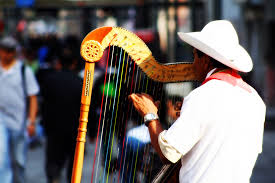 At a press conference to publicize the event Armando Chacha Antele, Regional Development Director of the State Council for Culture and the Arts, said that an estimated investment of 2.5 million dollars will be applied to the event and they expect attendance of about 30, 000 people coming from Puebla and the participating states.
At a press conference to publicize the event Armando Chacha Antele, Regional Development Director of the State Council for Culture and the Arts, said that an estimated investment of 2.5 million dollars will be applied to the event and they expect attendance of about 30, 000 people coming from Puebla and the participating states. Besides enjoying the beautiful region, visitors can learn about important sites in Xicotepec, such as world’s tallest virgin, which is 23 meters high; a pre-Hispanic ceremonial center and the Casa Carranza Museum, amongst other places to enrich the natural beauty of this magical town.
Besides enjoying the beautiful region, visitors can learn about important sites in Xicotepec, such as world’s tallest virgin, which is 23 meters high; a pre-Hispanic ceremonial center and the Casa Carranza Museum, amongst other places to enrich the natural beauty of this magical town. Activities will take place in nine forums, located in enclosures and main squares of the town and highlighting the life in the pre-Hispanic ceremonial center Xochipila, and the city center, where most of people will enjoy this event. The opening for the festival will be on Thursday, August 29th at the Plaza of the Constitution of Xicotepec, promptly at 19:30 hours.
Activities will take place in nine forums, located in enclosures and main squares of the town and highlighting the life in the pre-Hispanic ceremonial center Xochipila, and the city center, where most of people will enjoy this event. The opening for the festival will be on Thursday, August 29th at the Plaza of the Constitution of Xicotepec, promptly at 19:30 hours.
